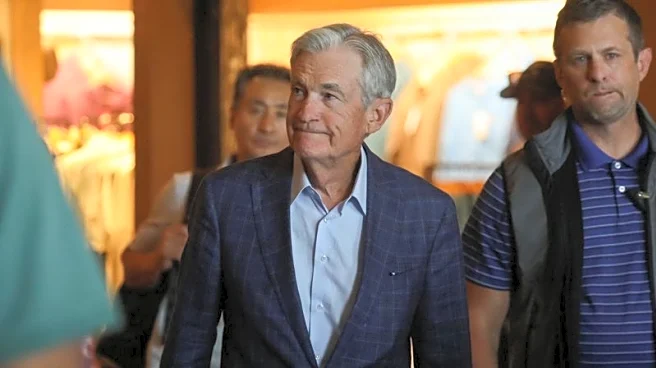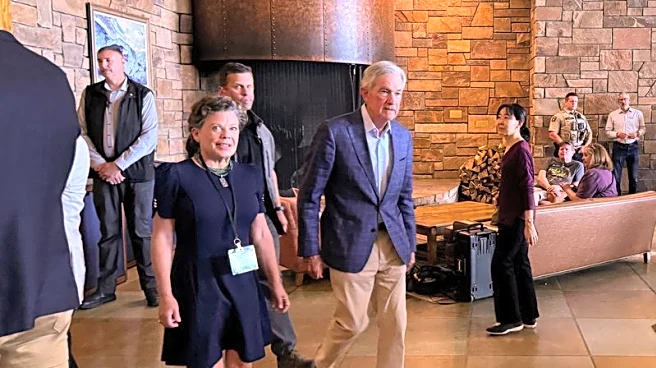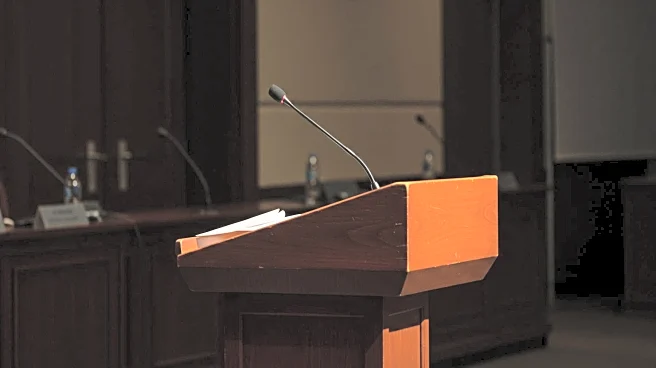What is the story about?
What's Happening?
Federal Reserve Chair Jerome Powell has announced updates to the U.S. central bank's operating framework, reflecting significant changes in the economic landscape over the past five years. The new framework addresses the return of higher inflation pressures and the reduced prospect of near-zero short-term interest rates. Powell emphasized continuity with past statements, highlighting the need for forward-looking monetary policy that considers the effects of economic lags. The updated framework moves away from the previous low-rate environment and flexible inflation targeting strategy, eliminating the 'makeup' strategy from the 2020 framework. Powell's announcement was made during a speech at the Jackson Hole economic symposium in Wyoming.
Why It's Important?
The changes in the Federal Reserve's policy framework are significant as they reflect the evolving economic conditions post-pandemic. The previous framework, adopted during a period of low inflation, was quickly overtaken by the high inflation pressures that emerged during the COVID-19 pandemic. The updated framework aims to ensure that longer-term inflation expectations remain well-anchored, benefiting both employment and inflation mandates. This shift is crucial for investors and economic stakeholders, as it signals the Fed's readiness to adapt to new economic realities and potentially influence interest rate decisions.
What's Next?
The Federal Reserve's revised framework suggests a potential shift in interest rate policies, with many investors anticipating possible rate cuts in September. However, ongoing tariff-related inflation threats could influence the Fed's decision-making process. The central bank's ability to return to pre-pandemic low interest rates remains uncertain, given the changes in the economy and increased government borrowing. Stakeholders will closely monitor the Fed's actions and statements for indications of future monetary policy directions.
AI Generated Content
Do you find this article useful?












